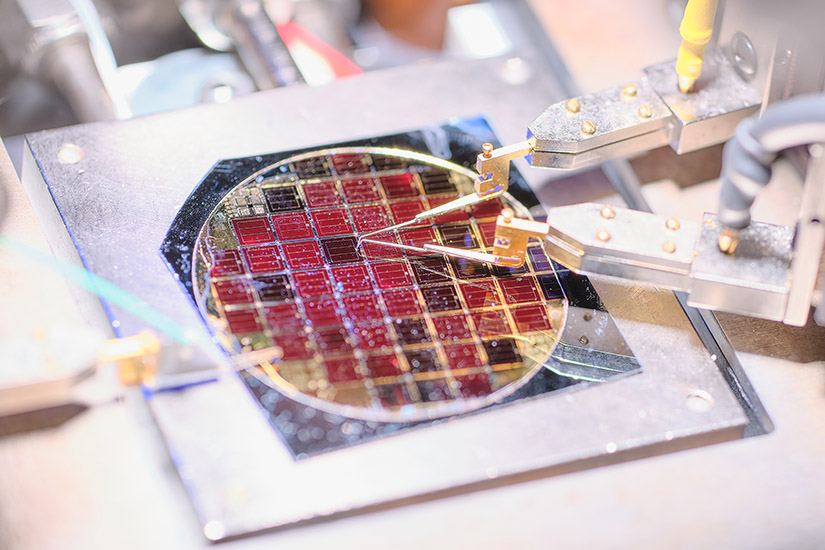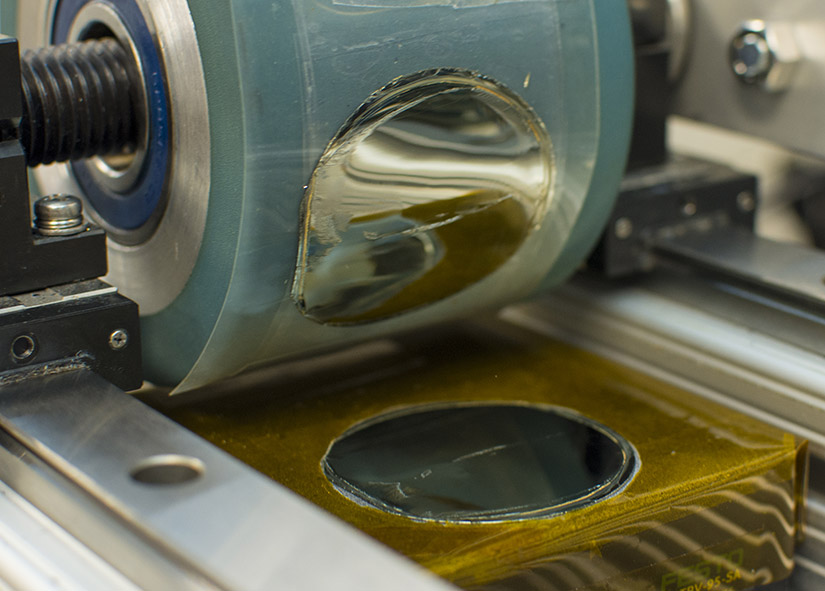NREL, Mines Researchers Show Advances in Development of III-V Solar Cells for Use on Earth

New research from the National Renewable Energy Laboratory (NREL) could help bring highly efficient solar cells down to Earth.
Two recently published papers spell out advances in the field of photovoltaics made from III-V materials—so named because of where they fall on the periodic table. The improvements to the III-V solar cells will help the technology find a terrestrial home. Although extremely efficient, III-V cells carry such a high price tag it only makes economic sense to use them on satellites and Mars rovers.
Ongoing research at NREL is focused on changing that. If the price can be brought down, the flexible thin-film solar cells would be ideal for building-integrated PV.
“III-Vs are, frankly, the best solar cell technology,” said Aaron Ptak, a senior scientist in the National Center for Photovoltaics at NREL and a co-author of both papers. Unlike silicon, which is the dominant solar technology, III-Vs make better use of a larger section of the solar spectrum and stand out as having the highest solar-to-electricity conversion efficiency of any PV technology.
Two methods are used to produce III-V solar cells, which are thin films made inside a reactor chamber by depositing III-V-containing vapors on top of a substrate: hydride vapor phase epitaxy (HVPE) and organometallic vapor phase epitaxy (OMVPE). Researchers at NREL improved upon the first method and developed a process called dynamic HVPE, or D-HVPE, which uses a dual-reaction chamber to make the solar cells quicker and cheaper.
The two new scientific papers reveal advances made to solar cells using these methods.
One saw a group of five researchers at NREL setting a record of 26% efficiency for a solar cell made using D-HVPE. The cell used aluminum indium phosphide (AlInP) deposited on gallium arsenide (GaAs) solar cells for the first time in D-HVPE. This result is remarkable because historically the use of aluminum in III-V cells grown via HVPE had been considered impossible.
“AlInP in itself is well understood in the OMVPE world, so state-of-the-art III-V solar cells already use AlInP,” said Jacob Boyer, a post-doctoral researcher at NREL and lead author of the paper, “AlInP-passivated III–V solar cells grown by dynamic hydride vapor phase epitaxy.” The article, which appears in the journal Progress in Photovoltaics, was co-authored by Ptak, Kevin Schulte, Matthew Young, and John Simon.
Schulte, Simon, Ptak, and other researchers at NREL previously reported ways to overcome the problems associated with aluminum in the HVPE process, by shifting from aluminum monochloride to aluminum trichloride. The former would etch the walls of the reactor and deposit Al compounds well before reaching the substrate.
By being able to use aluminum trichloride, the researchers were able to develop and employ AlInP, which greatly improved the performance of both a single-junction cell and a two-junction cell. The two-junction cell with AlInP reached 28.0% efficiency, a near record for HVPE solar cells. That cell was made using layers of GaAs and gallium indium phosphide (GaInP).
The research demonstrated that AlInP by D-HVPE has sufficient quality to yield the expected solar cell improvements despite the historical issues with Al in the HVPE environment, Boyer said.
The other paper, published in Advanced Energy Materials, offers another way to reduce costs for III-V cells. The cells are grown on a substrate, which can be reused but only under certain conditions. The research conducted at NREL and Colorado School of Mines pioneered a fundamentally different approach. Writing in the paper, “High-Efficiency Solar Cells Grown on Spalled Germanium for Substrate Reuse without Polishing,” the researchers noted the cost of the substrate “is a significant barrier to widespread III-V use in terrestrial applications.” John Mangum of NREL is lead author of the paper.
An existing process allows a cell to be lifted off a GaAs substrate so that the substrate can be reused. But the only commercially deployed process leaves behind surface residue that lowers the performance of the cell and accumulates with each reuse. To keep the substrate in better shape, it must undergo a polishing at regular intervals.
“If you are going to do polishing between each reuse step, that would consume a certain amount of material and so that would limit how many times you could reuse it,” said Corinne Packard, an associate professor at Mines and corresponding author of the paper. “By being able to grow a new device without polishing, we think that extends the number of reuses, or it promises to.”
The NREL-Mines development eliminates the need for polishing by a controlled process called spalling that creates a crack within the substrate nearly parallel to its surface. That fracture allows the cell to be easily removed from the substrate and the substrate reused.

The existing technology to separate cell from the substrate takes from six to eight hours to remove a film from a 6-inch solar cell, Ptak said.
“Spalling happens in seconds, so there’s a tremendous time savings,” he said. “The real advance here is that these devices were grown without any repolishing or repreparation of the spalled surface at all.”
The single-junction III-V cell, which deposited GaAs on a germanium (Ge) substrate, was grown through OMVPE and yielded an efficiency of 23.8% efficiency.
The spalling process creates some defects within the cell, which can reduce its performance. The cell could be grown using the D-HVPE process, which Ptak said may enable any substrate imperfections to be smoothed over.
“I’m hopeful, but of course all of this needs to be developed and demonstrated,” he said.
In addition to Ptak and Mangum, the co-authors of the spalling paper from NREL are Anthony Rice, Evan Wong, Steve Johnston, Harvey Guthrey, and John Geisz. The other co-authors from Mines are Jie Chen, Jason Chenenko, and Anna Braun.
The Department of Energy’s Solar Energy Technologies Office and the Air Force Research Laboratory funded various aspects of the NREL research.
Last Updated May 28, 2025
